![]()
September 18, 2009 | International Law (JCPA), Vol. 9, No. 10 | by Lt. Col. (ret.) Jonathan D. Halevi
Goldstone Report: blocking the truth of the Gaza War
How the Goldstone Commission Understated the Hamas Threat to Palestinian Civilians.
- Was the UN commission’s approach one-sided against Israel, or unbiased and objective as commission chairman Richard Goldstone contended? Statements of Palestinians recorded by the commission and posted on the UN website provide authentic evidence of the commission’s methodology and raise serious questions about its intentions to discover the truth.
- Commission members did not ask the interviewed Palestinians questions about the activities of Hamas and the other Palestinian terrorist organizations operating in the Gaza Strip which could be classified as war crimes or that were potentially dangerous to innocent Palestinians. Furthermore, there was no serious consideration of Palestinian “friendly fire” incidents, and we can only guess how many Palestinian civilians were killed or wounded by Palestinian fire.
- Reports issued by the Palestinian terrorist organizations themselves detailed the fighting in a way that often contradicted the Palestinian witnesses. In addition, the witnesses hid vital information from the commission regarding the presence of armed terrorists or exchanges of fire in their vicinity.
- On June 28 and 29, 2009, the Goldstone Commission recorded Palestinian statements at the UNRWA headquarters in Gaza City. The following is an analysis of the four main statements, the way the commission interpreted them, and reports from other Palestinian sources which contradict the testimony presented to the commission.
On September 15, 2009, the UN investigating commission known as the Goldstone Commission published its conclusions regarding Israel’s Gaza operation (December 27, 2008-January 18, 2009), accusing Israel of violating both international humanitarian law and the Geneva Conventions, and committing war crimes.
In response, the Israel Foreign Ministry issued an official statement accusing the commission of bias and one-sidedness, and of ignoring the thousands of Hamas rocket attacks on Israeli civilians which, Israel claimed, made the military operation an absolute necessity. “The one-sided mandate of the Gaza Fact-Finding Mission, and the resolution that established it, gave serious reasons for concern….At the same time the report all but ignores the deliberate strategy of Hamas of operating within and behind the civilian population and turning densely populated areas into an arena of battle,” said the ministry.
The Goldstone Commission Never Asked About Palestinian War Crimes
Was the UN commission’s approach one-sided against Israel, or unbiased and objective as commission chairman Richard Goldstone contended? Statements of Palestinians recorded by the commission and posted on the UN website provide authentic evidence of the commission’s methodology and raise serious questions about its intentions to discover the truth. Commission members did not ask the interviewed Palestinians questions about the activities of Hamas and the other Palestinian terrorist organizations operating in the Gaza Strip which could be classified as war crimes or that were potentially dangerous to innocent Palestinians. They never asked about:
- Launching rockets at Israeli towns and villages from within residential dwellings;
- Firing mortar shells into Palestinian neighborhoods when IDF forces were operating in or near the area;
- Firing anti-tank missiles, rifles, and machine guns at Palestinian buildings in Gaza suspected of having been entered by IDF forces despite the presence of Palestinian civilians in the area;
- Seizing private homes from which to ambush IDF forces;
- Booby-trapping houses before and during the war and detonating the bombs;
- Planting various types of anti-personnel and anti-vehicle IEDs near houses and detonating them;
- Sniping and firing heavy machine guns at IDF forces within Palestinian residential areas.
None of the statements taken by the commission (as posted on the UN website) reported even one single instance of the presence of armed Palestinians, or of armed Palestinians firing rockets at Israel or shooting at IDF forces operating in the Gaza Strip. There was no serious consideration of Palestinian “friendly fire” incidents, which occurs with the most disciplined armies, but is not adequately examined as an explanation for Palestinian losses, and we can only guess how many Palestinian civilians were killed or wounded by Palestinian fire. In fact, they reported that throughout the entire three weeks of fighting there was no significant Palestinian resistance.
The commission did not press the witnesses in order to elicit more information and did not confront them with the reports issued by the Palestinian terrorist organizations themselves, which detailed the fighting in a way that often contradicted the Palestinian witnesses. It did not adequately examine Palestinian rules of engagement – or the lack of any such rules. In addition, the witnesses hid vital information from the commission regarding the presence of armed terrorists or exchanges of fire in their vicinity, casting doubt on their reliability.
Case Studies: Analysis of Palestinian Testimony to the Goldstone Commission
On June 28 and 29, 2009, the Goldstone Commission recorded Palestinian statements at the UNRWA headquarters in Gaza City, and posted the questions and answers on the commission’s website.1 The following is an analysis of the four main statements, the way the commission interpreted them, and reports from other Palestinian sources which contradict the testimony presented to the commission:
Statements from the al-Silawi Family
Three members of the al-Silawi family were interviewed by the commission: Moussa al-Silawi (91, blind), Sabah al-Silawi (Moussa’s wife), and Mouteeh al-Silawi, a Hamas official.2 The most detailed statement was that of Mouteeh al-Silawi, deputy director of the Hamas administration’s Muslim religious endowments ministry for the northern Gaza Strip, who said he was giving a sermon when the mosque was attacked. He claimed that there was no military activity in the Ibrahim al-Maqadma mosque or around it during the attack. Worshippers came to the mosque seeking a safe haven on the assumption that it was a secure place. The evening and night prayers were said one after another to prevent unnecessary movement of worshippers outside the mosque. Israel committed a war crime in violation of international law by attacking civilians in a mosque.
The commission members asked: What is the name of the mosque and where is it located? What was the date of the event? Was a warning given before the attack? When was the mosque built? Were the people killed the supporters of families? Was there a noise before the explosion and what damage did it do? How many people were killed and wounded in the attack? How many people were in the mosque when it was attacked? How far is the mosque from the nearest hospital? Does the hospital have a sufficient quantity of medical equipment and are its services sufficient?
They also asked: Under what conditions are the two prayers [evening and night) joined? Do more people come when prayers are joined? Was this the first time the prayers were joined? When does the evening prayer begin and when does it end? When prayers are joined, exactly how much time elapses between them? When, during the confrontation, did the mosque begin joining the prayers? Was January 3 the first day the prayers were joined?
Many of the questions were irrelevant and unconnected to the circumstances of the event. The commission members did not ask about armed men in the mosque, whether it was used for military purposes or incited worshippers to carry out terrorist attacks against Israel. They did not ask if there were weapons in the mosque, if armed men were operating near the mosque, whether Hamas and its Izz al-Din al-Qassam Brigades controlled the mosque and used it to recruit operatives, or the identity of the casualties and their organizational affiliation (including members of the al-Silawi family).
An examination of freely accessible Palestinian sources shows that the casualties in this incident were terrorist operatives and included members of the al-Silawi family, who were represented to the commission as innocent civilians.
The terrorists killed in the attack included:
- Ibrahim Moussa Issa al-Silawi, an operative in the Izz al-Din al-Qassam Brigades, Hamas’ military-terrorist wing. Born December 1, 1946, in Jabaliya in the northern Gaza Strip. According to the Izz al-Din al-Qassam Brigades website, Ibrahim “received his love of jihad and hatred for the Zionist enemy with his mother’s milk.” In 1984 he joined the Islamic Movement (which later became Hamas) and was a Muslim Brotherhood operative. He had close relations with Nizar Riyyan, a senior Hamas terrorist operative, and joined the Izz al-Din al-Qassam Brigades in 2003, at the age of 38. He was posted to the northern Gaza Strip brigade and participated in military missions: manning front-line positions in Jabaliya, fighting IDF forces, and digging and preparing tunnels for Izz al-Din al-Qassam Brigades use.3
- Omar Abd al-Hafez Moussa al-Silawi (Abu Souheib), an Izz al-Din al-Qassam Brigades operative. Born in Saudi Arabia on September 29, 1981, and joined Hamas and the Muslim Brotherhood. In 2004 he joined the Izz al-Din al-Qassam Brigades and was posted to front-line positions on the eastern border of Jabaliya. He also prepared and planted IEDs, participated in fighting the IDF, and launched mortar shells and Kassam rockets at Israeli towns and villages.4
- Sayid Salah Sayid Batah, an Izz al-Din al-Qassam Brigades operative. Born on April 7, 1986, in Jabaliya. A Hamas and Muslim Brotherhood operative, he joined the Izz al-Din al-Qassam Brigades and was deployed in the northern Gaza Strip brigade. He was posted to front-line positions in Jabaliya, prepared and planted IEDs, and dug and prepared tunnels for Izz al-Din al-Qassam Brigades use.5
- Ahmed Hamad Hassan Abu Ita, an Izz al-Din al-Qassam Brigades operative. Born in Saudi Arabia on February 15, 1984. A Hamas and Muslim Brotherhood operative, he joined the Izz al-Din al-Qassam Brigades in 2006 and was posted to front-line positions. He fought the IDF in the Jabaliya, al-Salatin and al-Atatra regions, prepared and planted IEDs, was deployed in the suicide bombers’ unit, and regularly participated in ambushes against IDF soldiers. The Izz al-Din al-Qassam Brigades website reported that he was one of the operatives who received instructions, after the initial Israeli air attack on December 27, to deploy in accordance with previous instructions. According to the website report, on January 3 he went to the Ibrahim al-Maqadma mosque to meet “young people” and was killed in the IDF attack there.6 [Note: The Izz al-Din al-Qassam Brigades version clearly shows that Hamas uses mosques as meeting places for its operatives to coordinate their fighting against the IDF.] His father said that during the first week of the fighting his son launched rockets into Israeli territory every day.7
- Muhanad Ibrahim al-Tanani (Abu Islam), an operative in the Al-Quds Battalions, the military-terrorist wing of the Palestinian Islamic Jihad, born April 23, 1988. The Palestinian Islamic Jihad website reported that his parents brought him up to love jihad. When the Second Intifada broke out he was 12, and often went to the Erez crossing with other children to throw rocks at the IDF post and confront the soldiers. In 2002 he joined the Palestinian Islamic Jihad and later its military-terrorist wing. He underwent military training and was posted to front-line positions on the northern border of the Gaza Strip. In addition to his military activities he participated in Palestinian Islamic Jihad meetings and events, and led the organization’s Internet forums.8
- Rajah Nahad Rajah Ziyyada, 18, an Al-Quds Battalions operative.9
- Ahmed Assad Diyab Tabil, 16, a Hamas operative, was a member of the Hamas student organization, which recruited him into the Izz al-Din al-Qassam Brigades.10
Statement of Mohammed Fuoad Abu Askar
Mohammed Fuoad Abu Askar represented himself to the commission as the director-general of Hamas’ ministry of Muslim religious endowments.11 He said he had been detained in Israel in 1992 for belonging to Hamas. He told the commission that his house was “unjustly” blown up by the IDF. He said he had received a telephone call warning him to evacuate the house from someone who identified himself as an IDF representative and that twenty minutes later his house was struck from the air.
Askar said a short time later the area around the Al-Fakhura school was also bombed. The school served as a shelter for many Palestinians from Beit Lahiya, Al-Salatin and Al-Atatra, who regarded it as a safe haven because it was located in the middle of the refugee camp and it was flying the UNRWA flag. He said he saw three bombs hit the school region and he heard more. Two hit the house of the Diyab family, killing 11 people. Dozens of people were killed near the school and most of the casualties were children. There were no armed men in the area, as opposed to Israeli claims. Two of his children, Khaled and Imad, were killed, as was his bother Raafat, all of them, according to Askar, innocent civilians.
The commission members asked: Was the telephone warning you received a recorded announcement and what did you do following it? Did you receive the call via a land line or cell phone? Where did you go when you left the house? How much time passed between the attack on the Al-Fakhura school and the attack on the Diyab family house? Did you or any of your family visit the Diyabs’ house after the attack on yours?
Although Mohammed Fuoad Abu Askar admitted being a Hamas operative and having been detained by Israel, the commission did not think to ask whether he was connected with the Izz al-Din al-Qassam Brigades. They did not ask him whether those killed near the school belonged to any organization or were military-terrorist operatives.
An examination of freely accessible Palestinian sources shows that contrary to his claims, he and his sons were directly and closely linked to the Izz al-Din al-Qassam Brigades, a connection which included providing terrorist operatives with weapons and ammunition, and that there were a number of Palestinian terrorist operatives in the Al-Fakhura school area, as follows:
- Mohammed Fuoad Abu Askar himself plays a key role in the Izz al-Din al-Qassam Brigades.12 Some of his sons also belonged to the Brigades, among them Khaled (killed in the attack), Ahmed (killed on July 7, 2006, when he tried to launch an anti-tank missile against an IDF force),13 and Osama (critically wounded fighting the IDF on October 13, 2004).14
- Khaled Mohammed Fuoad Abu Askar (Abu al-‘Izz), Mohammed’s son, an Izz al-Din al-Qassam Brigades operative, was born on December 12, 1989, in Jabaliya. At the age of 15 he joined the Muslim Brotherhood and was active in the Hamas student organization, which serves as a recruiting agency for the Izz al-Din al-Qassam Brigades. In 2006 he was accepted into fighting groups posted in front-line positions. He underwent an advanced military training course and was posted to a special unit of the north Gaza battalion where he participated in dozens of ambushes and fought against IDF forces. He served as a military instructor in the Imad Aqel battalion and supervised the ambush and suicide unit.
He was supposed to be the third member of a Hamas squad in a suicide bombing attack on October 26, 2007, but an operative named Ghassan al-Ela was sent in his place. Khaled was offended and demanded to be sent on a suicide bombing mission. In March 2008 he was sent to ambush IDF forces operating in the northern Gaza Strip, but because of conditions on the ground the attack was aborted. He again demanded to be put at the top of the suicide bomber list. On June 4, 2008, he and four other Izz al-Din al-Qassam Brigades operatives prepared a suicide bombing attack, but a technical error caused the bomb to explode and he was the only one who survived. He again demanded to be sent on a suicide bombing mission, although he had gotten married on December 12, 2008.
He was killed in January 2009 in the attack in the region of the Al-Fakhura school. The Izz al-Din al-Qassam Brigades website reported that during the last months of his life he worked for the military supply unit and provided operatives with weapons, missiles, and military equipment. This information is particularly important because it supports IDF intelligence that the house of Mohammed Fuoad Abu Askar, where his son Khaled lived, served as an Izz al-Din al-Qassam Brigades weapons storehouse.15
Others terrorist operatives killed in the same incident included:
- Bilal Hamzah Obeid, an Izz al-Din al-Qassam Brigades operative, who was killed along with Khaled Abu Askar in the attack near the Al-Fakhura school.16
- Raafat Abu Askar, a military-terrorist operative in the security services with the rank of warrant officer, killed in the attack near the Al-Fakhura school.
- Osama Jemal Obeid, an Izz al-Din al-Qassam Brigades operative, killed in the attack near the Al-Fakhura school.17
- Iyad Jaber Aman, an Izz al-Din al-Qassam Brigades operative, killed in the attack near the Al-Fakhura school.18
- Abd Muhammad Abd Qudas, a Fatah operative active in Palestinian Military Intelligence, killed in the attack near the Al-Fakhura school.19
- Atia Hassan al-Madhoun and his son, Ziyad al-Madhoun, operatives in the Brigades of National Resistance, the military-terrorist wing of the Democratic Front for the Liberation of Palestine. Atia was regional commander for Jabaliya. The two were the father and brother of Hassan al-Madhoun, one of the senior commanders of Fatah’s Al-Aqsa Martyrs Brigades, who was lynched by Hamas in the summer of 2006. The two were killed in the attack near the Al-Fakhura school.20
Statements of Wail and Salah al-Samouni
Wail and Salah al-Samouni described the shelling of Wail’s house, where the extended al-Samouni family had sought shelter and where more than 20 people were killed.21 They told the commission: At about 5:30 a.m. on the morning of January 5 Wail left the house with some other men to bring wood for a fire. As soon as they left the house a helicopter filed a missile at them and then a number of missiles as the house. After the house was hit the wounded proceeded toward Salah a-Din Street and were refused medical attention by the IDF soldiers. Salah claimed that the soldiers fired shots over their heads to frighten them and make them leave more quickly. They said there was no activity of armed Palestinians around the house where the family members had sought shelter. Salah al-Samouni said that “everyone is a farmer, I swear to Allah that everyone is a farmer,” and rejected the possibility that they were armed or wanted.
The commission members asked: Can Wail describe the soldiers and identify them according to their voices and uniforms? How did the IDF forces destroy the agricultural land near the house? How large was the agricultural area destroyed by the IDF? Was the witness treated at the Shifa Hospital?
The commission did not ask about the identity of the dead Palestinians and about the possibility that some of them were terrorist operatives. It did not challenge their claim that there were no armed Palestinians in the area, despite reports by both Palestinian terrorist organizations and the IDF about exchanges of fire in the area. In addition, the commission did not press the witness about his claim that the soldiers did not provide medical attention, in contradiction of a statement given by a female member of the family who told the NGO B’tselem that the soldiers had given them medical aid.
An examination of freely accessible Palestinian sources shows that Wail and Salah al-Samouni hid important details from the commission which could shed light on the event. An examination of their statements and the statements of other members of the al-Samouni family to human rights organizations and published in Palestinian newspapers raises questions as to the veracity of their version of what actually happened on January 5.22
Members of the family repeatedly claimed that all the people in the house were ordinary civilians. However, at least three were affiliated with Palestinian Islamic Jihad. Meisa al-Samouni did not tell B’tselem that her husband, Tawfiq Rashad Hilmi al-Samouni, who was killed on January 5, was a Palestinian Islamic Jihad terrorist operative. She and the other members of the extended family, including Wail and Salah (who gave statements to the Goldstone Commission), never mentioned or hinted that other family members in the house at the time were Palestinian Islamic Jihad operatives, among them Muhammad Ibrahim Hilmi al-Samouni and Walid Rahad Hilmi al-Samouni. A Palestinian Islamic Jihad flyer noted that Muhammad and Walid al-Samouni were active in fighting against the IDF in the Zeitun neighborhood.
The al-Samouni family members firmly adhere to the version that there was no Palestinian military activity near the house and that the nearest military activity was at least a mile away, and that, they claimed, was limited to firing rockets into Israeli territory, not close fighting.
However, the official Palestinian Islamic Jihad version is completely different. In a statement issued on January 5, Palestinian Islamic Jihad said that on the evening of January 4 its fighters had fired an RGP from the Zeitun neighborhood at an Israeli tank and had opened fire at IDF soldiers. At 1:20 a.m. on January 5, a Palestinian Islamic Jihad engineering unit detonated a 50-kg. bomb near an Israeli tank not far from the Al-Tawhid mosque near the house of Wail al-Samouni. At 6:30 a.m., the engineering unit detonated a bomb near an IDF infantry unit operating near the Al-Tawhid mosque in the Zeitun neighborhood.23 According to another official Palestinian Islamic Jihad statement, one of its operatives was killed in fighting nearby. His name was Muhammad Ibrahim al-Samouni.
The significance of the foregoing is that the four men who left the al-Samouni house in the early hours of the morning, among them Muhammad Ibrahim al-Samouni, did not necessarily do so for the innocent reasons given by their family. They might have gone out for a reason connected to the military activities taking place in the same area between Palestinian Islamic Jihad terrorist operatives and IDF forces. Palestinian Islamic Jihad reported that operatives of its military-terrorist wing, the Al-Quds Battalions, “surprised the occupation forces and attacked them from behind their lines, and there was a fierce battle in the southern part of the Zeitun neighborhood.” Another report, given “exclusively to the Muslim Brotherhood website,” detailed Palestinian Islamic Jihad activities in the Zeitun neighborhood on January 5: “According to eye-witnesses, the fighters of the resistance waited and barricaded themselves in secure locations, remaining in places inhabited by civilians, from which they left to carry out planned attacks against the forces of the Zionist occupier.”
A Palestinian Islamic Jihad poster commemorating Muhammad Ibrahim al-Samouni is captioned: “He (Muhammad), along with the mujaheed Walid Rashad al-Samouni, blew up the tank, causing the deaths of a number of Zionists, as admitted by the enemy, on the first night of the ground invasion during the war south of the Zeitun neighborhood.”24
Statement of Khaled Muhammad Abd Rabbo
Khaled Abd Rabbo reported on the deaths of two of his children on January 7, 2009.25 Khaled lives in Jabaliya near the Israeli border in a four-story house. He and his family did not leave it even when the land battles began. He claimed he saw no activity of armed Palestinians in the area. He said that on January 7 an IDF force entered the area around his house and positioned tanks nearby. The soldiers used a megaphone to call the residents out of the house. They came out holding a white flag, and one of the soldiers got out of a tank and shot at his children for no reason. He said two of his daughters were killed, another was seriously wounded, and his wife was also wounded.
No questions were asked by the members of the commission, not about the events, or whether there was fighting in the area, or whether there were armed Palestinians.
Contrary to the claims made by Khaled Abd Rabbo, Palestinian sources reported on armed Palestinian activity in the area near the incident and on exchanges of fire between Palestinians and IDF forces. At the time Khaled claimed his daughters were shot by IDF soldiers, four other Palestinians were killed nearby: Ibrahim Abd al-Rahim Suleiman, 19, an Izz al-Din al-Qassam Brigades operative; Shadi Issam Hamad, 33, a Popular Front for the Liberation of Palestine (George Habash) operative; Muhammad Ali al-Sultan, 55, an Izz al-Din al-Qassam Brigades operative; and Ahmad Adib Faraj Juneid, 26, an Izz al-Din al-Qassam Brigades operative.26
The circumstances of Ahmed Juneid’s death shed light on the event: Ahmed Juneid joined Hamas in 2003 and later joined the Muslim Brotherhood and also became an Izz al-Din al-Qassam Brigades operative. He was posted to the front-line positions in Jabaliya, joined the Brigades’ sabotage and suicide bomber unit, and participated in ambushes and fighting with IDF forces. According to the Izz al-Din al-Qassam Brigades website, Ahmed Juneid was another one of its operatives who, after the IDF attack on December 27, 2008, was ordered to take up a position at the front according to previous instructions. According to the website report, on January 7 he participated in an ambush of IDF soldiers in one of the houses in the eastern part of Jabaliya along with other Izz al-Din al-Qassam Brigades operatives. The Hamas squad was identified by the IDF and an exchange of fire ensued. The IDF force was forced to withdraw and armed vehicles were brought in, forcing Juneid to leave the house he was in and go elsewhere. A surveillance plane located him and fired a rocket, killing him.27
The Izz al-Din al-Qassam Brigades report reveals information about the exchange of fire between the IDF and armed Palestinians in the area where Khaled Abu Rabbo’s daughters were killed, and its closeness in time to the events he reported. His version and the Izz al-Din al-Qassam Brigades website provided similar descriptions of the advance of IDF armored vehicles into the area at the same time. However, Khaled Abu Rabbo did not tell the UN commission about the exchanges of fire between IDF forces and Izz al-Din al-Qassam Brigades operatives. The possibility cannot be ruled out that his children were caught in the crossfire and may have been killed by Palestinians.
As we can see from a detailed analysis of freely accessible Palestinian sources (in Arabic), competing explanations exist that counter the claims of the Palestinian witnesses who testified before the Goldstone Commission. At the same time, questioning by the members of the commission proved to be superficial and was ill-suited to elicit the truth about events in Gaza.
Notes
1. http://www.un.org/webcast/unhrc/archive.asp?go=090628
2. http://webcast.un.org/ramgen/ondemand/conferences/unhrc/gaza/gaza01-orig.rm?start=01:35:05&end=02:15:20
3. http://www.alqassam.ps/arabic/sohdaa5.php?id=1495
4. http://www.alqassam.ps/arabic/sohdaa5.php?id=1416
5. http://www.alqassam.ps/arabic/sohdaa5.php?sub_action=sera&id=1373
6. http://www.alqassam.ps/arabic/sohdaa5.php?sub_action=sera&id=1356
7. http://www.sabiroon.org/news/specialNewsDetails.php?code=731&category=7
8. http://www.saraya.ps/forum/showthread.php?p=112352
9. http://www.saraya.ps/forum/showthread.php?t=9356
10. http://www.sabiroon.org/news/specialNewsDetails.php?code=1373&category=7
11. http://webcast.un.org/ramgen/ondemand/conferences/unhrc/gaza/gaza02-orig.rm?start=00:02:36&end=00:32:17
12. http://www.palestine-info.info/ar/default.aspx?xyz= U6Qq7k%2bcOd87MDI46m9rUxJEpMO%2bi1s7E2vaEXQm5C6U%2bt%2b%2bd65eOED%2bs9lqg5clKspsNLv%2bC4NbAGvm PHDv0t8StBpxSdkUfNb0gKi7pZyx6VahFdoaCrgX%2f%2bPH3ywxc%2fm1BpLmoow%3d
13. http://www.alqassam.ps/arabic/sohdaa5.php?id=652
14. http://www.alqassam.ps/arabic/sohdaa5.php?id=652
15. http://www.alqassam.ps/arabic/sohdaa5.php?id=1441
16. http://www.alqassam.ps/arabic/sohdaa5.php?id=1439
17. http://www.paldf.net/forum/showthread.php?t=416258
18. http://www.paldf.net/forum/showthread.php?t=346094
19. http://www.palvoice.com/forums/showthread.php?t=210507
20. http://www.alhourriah.org/?page=ShowDetails&Id=3061&table=articles
21. http://webcast.un.org/ramgen/ondemand/conferences/unhrc/gaza/gaza02b-orig.rm?start=00:01:26&end=00:24:12
22. The full investigation of the events at the al-Samouni house, including references, can be found at http://www.jcpa.org.il/Templates/showpage.asp?FID=586&DBID=1&LNGID=2&TMID=99&IID=22500
23. http://www.saraya.ps/view.php?id=10389
24. http://www.almoltaqa.ps/arabic/showthread.php?t=126200
25. http://webcast.un.org/ramgen/ondemand/conferences/unhrc/gaza/gaza02b-orig.rm?start=01:10:57&end=01:26:08
26. http://www.alqassam.ps/arabic/news1.php?id=7417
27. http://www.alqassam.ps/arabic/sohdaa5.php?id=1315
About the Author:
Lt. Col. (ret.) Jonathan D. Halevi is the research director for the Orient Research Group and a research fellow of the Jerusalem Center for Public Affairs. Halevi previously served as a senior adviser for political planning in Israel’s Foreign Ministry and as head of the data and information branch in the IDF Spokesperson’s Unit. This article was written in conjunction with the Global Law Forum sponsored by the Legacy Heritage Fund.
Copyright – Original materials copyright (c) by the authors.



 RSS
RSS

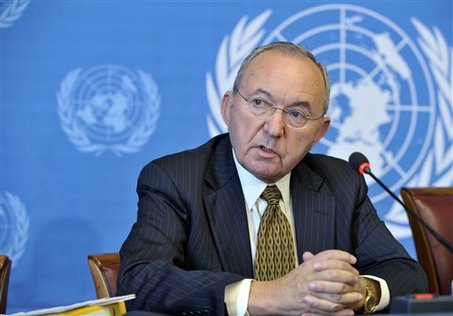
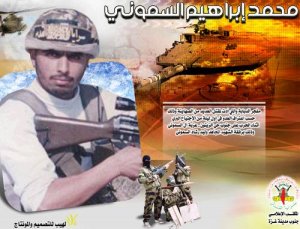
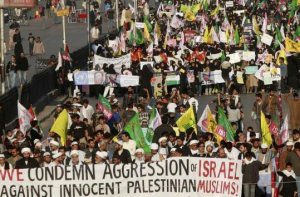


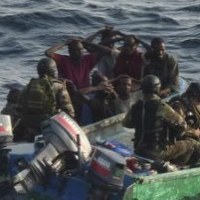
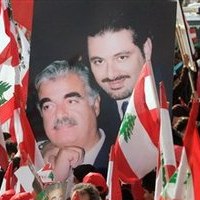
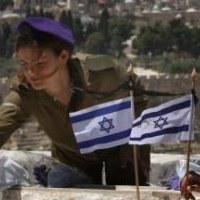






New article #crethiplethi about #Goldstone blocking the truth of the #Gaza war http://bit.ly/6KoQ3V
New article #crethiplethi about #Goldstone blocking the truth of the #Gaza war http://bit.ly/6KoQ3V